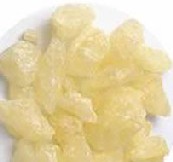
To next page
Inscription at: Lobo Tuwa,
West coast of Sumatra (1088)(in Tamil language)
-------------------------------------------------
In the Saka year 1010 current, month Masi, we, the Nanadesa-Tisaiyayirattu Ainnurruvar, (name of merchant association) having met at the Velapuram (the settlement on the seashore) in Varosu (Barus), also called the pattinam (commercial town) for the welfare of the merchant body blessed by Siva', decided to grant as follows to "our sons", the nagarasenapati Nattu-cettiyar, (settlement ruled by merchants) to Patinen-bumi-desi-appar (?), and to the mavettugal (elephant-trainers?); (on each of the) Ships' (cargoes?), the ship's captain (the term used refers to sea-faring Muslim merchants) and crew will pay the feeanju-tundayam (of the ship) in gold, pegged to the price of kasturi. (musk of Africa and Asia to be sold in China see: Wheatley: " Geographical Notes", p 105) and (then only) may "step on the cloth spread" (ie enter the settlement to trade). Thus we, the Five Hundred of the Thousand Directions , known in every direction in all Eighteen Lands, had the stone inscribed and planted. Do not forget charity, charity alone will help you.
Note; this inscription shows the importance of musk trade in S. East Asia. Its value was the basis of calculating taxes. It also shows the growing influence of Islam; among the international traders were already Muslims, not necessarily Arabs. Inscriptions in Java give names of foreign ships visiting the ports; all from India and S.E. Asia. Inscriptions: Kalirungan 883 AD; Palebuhan 927 AD; Cane 1021 AD; Patakan 1030 AD; Turun Hyang 1040 AD; Garaman 1050 AD. Nowhere any Arab ports are mentioned. We have here an indication that the Malay trading routes (including the African ones) were still holding out against the Arabs.